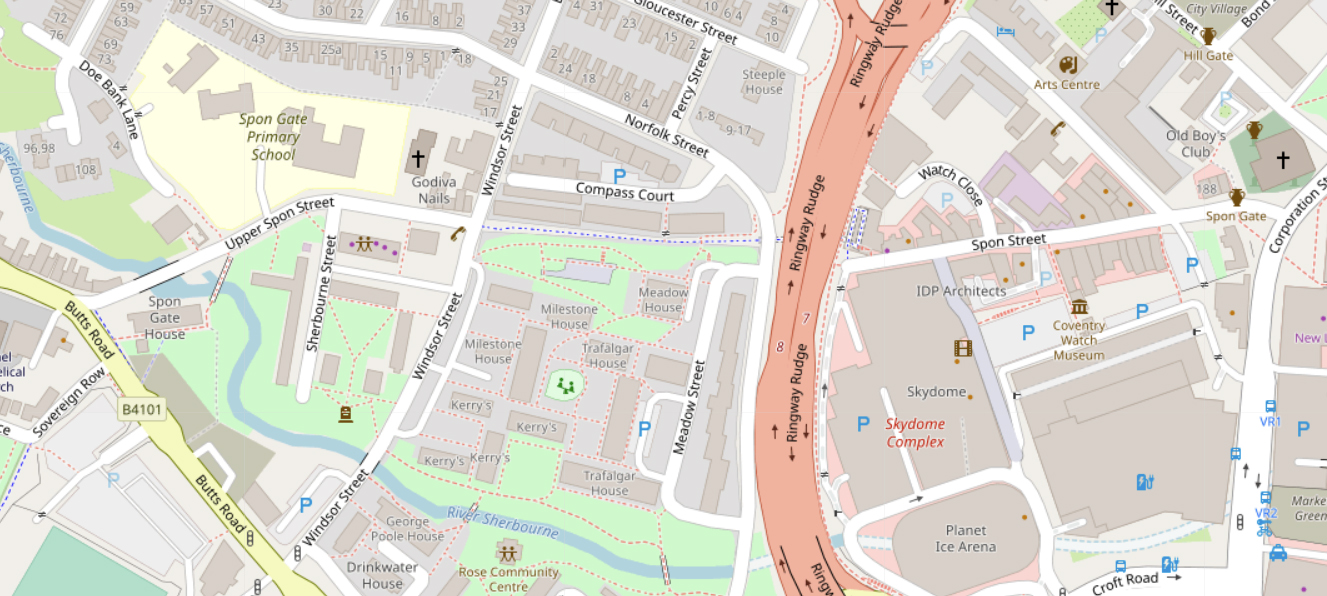
Today we have the fourteenth episode of Peter Walter’s series of lockdown walks “being a compendium of idle facts, hidden places and meaningless historiana gathered on walks within easy striding distance of the writer’s abode – and beyond”.
Once upon a time, the weavers craft guild built a wayfarers’ chapel for travellers to take some rest and spiritual nourishment as they crossed the River Sherbourne by the old ford into Coventry.
They called it the Chapel of St James and St Christopher and more than 600 years later it’s still there. But those welcoming days are long gone.
A shell of sandstone leans back from the roadside, inhabited now only by depressing graffiti and buddleia. Back in the 1950s, the city council devised a future for the old place as a ‘picturesque’ ruin. These days it’s just a ruin.

Neither is it the only structure in this part of town to feel the tender embrace of civic enhancement. Spon Bridge, which replaced the ford river crossing 250 years ago, is said to have been constructed with stone pillaged from both the old Coventry Cross and Spon Gate, survivors from the medieval city that at the time seemed to be standing around not doing very much.
Below the bridge, a moorhen and her chicks are pecking around among the litter beneath the brambles, and just beyond rises Spon Gate House, its eleven-storey listless blue and grey a frankly unappetising advertisement for the comprehensive development zone mania of the 1960s.
The liveliest-looking buildings on this stretch of what was all once Spon Street are those on Black Swan Terrace, a speculative development in the 1450s that still features the Weaver’s House, where John Croke and his missus once wrestled with a handloom upstairs. Moira no longer sells wet fish from the end shop, as advertised, but that doesn’t detract from its charm.
The subway under the ring road is not the most intimidating I’ve ever been in and it does lead up into Coventry’s most ‘medieval’ street, albeit that most of the buildings came from Much Park Street, the most tragic casualty of that bulldozer zone philosophy. Here, bizarrely, re-development meant jettied overhangs, leaded windows and carved oak doorways.
We’re walking in the footsteps of the folk who have shared their personal histories with Spon Street over the centuries, the dyers and tanners, the fletchers and whittawers (never did entirely get what they did for a living) and of course the weavers and watchmakers.
In one corner of what became Ikea’s car park stands a rare natural feature in this hard-edged cityscape, a tree. It’s a black mulberry, its thick mottled branches supported b y props, like an old gent resting on his sticks.
If it was a silk weaver who’d planted this tree then he’d got it wrong. Silk worms don’t eat black mulberry. But Ikea only lasted thirteen years in Coventry and this has been here for well over 150 years. There’s a lesson for the planners somewhere there.

